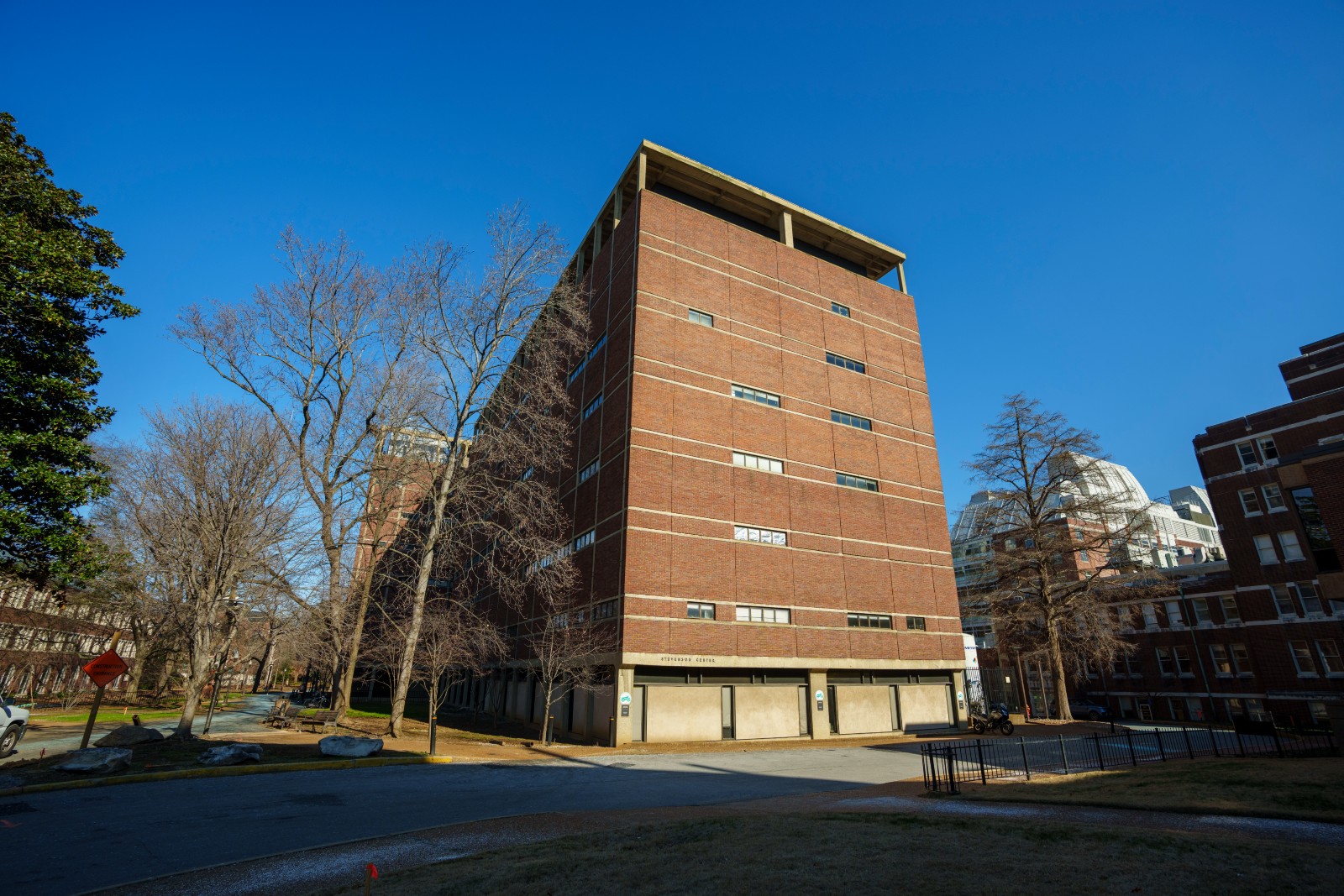Radical collaboration is the driving vision for the state-of the-art science building planned for the current site of Stevenson Center 6. The new building will be a shared space for the College of Arts and Science, the School of Engineering and the School of Medicine Basic Sciences; it will address the growing need for updated, accessible and sustainable facilities that offer space for an open exchange of ideas.
Planning the New Science Building
The planning process for this project is underway; the goal is to begin demolition in summer 2025 and to complete construction by 2028. This initiative is part of Vanderbilt’s broader efforts to ensure that the campus’s physical spaces can accommodate our ambitious goals of scientific research and discovery.
Science Space Planning Committee guides recommendation for new facilities
This project derives extensive input from the campus community. Provost and Vice Chancellor for Academic Affairs C. Cybele Raver’s Science Space Planning Committee conducted a survey of constituency groups, hosted listening sessions with faculty and staff, and identified best practices across university and research enterprises.
The committee, which was established in 2023, includes faculty and staff from the School of Engineering, the College of Arts and Science and the School of Medicine Basic Sciences. Their goal was to gather and analyze data to make sure Vanderbilt’s physical spaces can properly serve the university’s mission. The survey’s outcome confirmed the need for new research space.
“At Vanderbilt, we understand that the future of groundbreaking discovery relies on our ability to unite brilliant minds in environments that foster innovation,” Raver said. “This new science building represents a tremendous opportunity for Vanderbilt to solidify its role as a global leader in scientific research. It will provide a space where researchers, faculty and students from across our university can collaborate, exchange ideas and drive transformative solutions to the world’s most pressing challenges.”
Facilitating Collaboration and Interdisciplinary Research
The collaborative design of the new science building grows out of the successful precedent set by other schools that share a space, including the Engineering and Science Building (housing the Office of the Vice Provost for Research and Innovation, School of Engineering and School of Medicine Basic Sciences) and 17th and Horton (housing the College of Arts and Science, Peabody College, School of Engineering and the Data Science Institute). Each of these projects represents a transformative approach to fostering interdisciplinary research and discovery at Vanderbilt.
Following in their footsteps, the cutting-edge science building will increase collaboration among the schools and colleges and help recruit and retain faculty and students. All three schools’ deans are engaged in the planning process and excited about the possibilities.
“Building science space that meets the needs of our world-class faculty, students and staff is vital to the college’s and the university’s mission,” said Timothy P. McNamara, Searcy Family Dean of the College of Arts and Science. “This new building presents exciting opportunities for collaborating with our peers across schools, expanding our research capacity and, ultimately, making innovative breakthroughs that improve society.”
“Basic science research in the School of Medicine spans many disciplines and departments. Our highly collaborative community of faculty, research staff, students and postdocs are sure to benefit from this new building,” said John Kuriyan, dean of the School of Medicine Basic Sciences. “Now, with the colocation of School of Medicine basic science researchers with chemists, biologists and physicists, we are deepening how we facilitate biomedical discoveries, which ultimately translate into treatments and cures for disease.”
Transforming Spaces for Enhanced Discovery and Sustainability
This project is part of Vanderbilt’s long-term plans to ensure that we have state-of-the-art spaces to meet evolving academic and research needs on campus. Several projects reflect a range of approaches to making best use of Vanderbilt’s existing spaces: the renovation of Garland Hall, the renovation of Buttrick Hall, the expansion of Owen Graduate School of Management’s Management Hall and the nearly 92,000 square feet of renovations and additions in Peabody College of education and human development. Similar to these other projects, the new science building will include sustainable features and welcoming, accessible design.
“Transformative innovations to address the grand societal challenges of the 21st century will not happen inside a single discipline. They require seamless collaboration between scientists and engineers, enabled by an infrastructure where faculty, students and industry practitioners work together within the larger ecosystem of technology, business and policy,” said Krish Roy, the Bruce and Bridgitt Evans Dean of the School of Engineering and University Distinguished Professor. “This new facility will embody that ‘radically collaborative ecosystem’ vision and provide a sandbox for path-forging new ideas and innovations for the advancement of society and the human condition, locally and globally, and train the most impactful engineering leaders of the future.”
Minimizing Disruption During Construction
Vanderbilt is committed to making the construction process for the new science building as seamless as possible. The university is working with faculty, staff and students who may be displaced to ensure that their needs are accommodated and that their research and teaching programs sustain minimal interruption.
Community Engagement
A virtual information session for community feedback and questions will be Sept. 25, from 4 to 5 p.m. Provost C. Cybele Raver will moderate the panel; deans Kuriyan, McNamara and Roy will participate. Register to attend.
